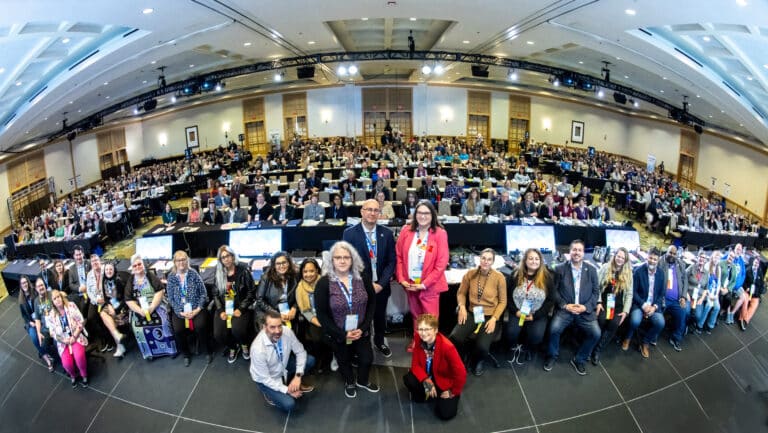As we get ready for the September 8 return to schools, it seems as though this summer has flown by.
Please ensure that both your site health and safety committee and your joint health and safety committee have a copy of your district’s safety plan.
We’ll continue to provide updates as we get new information.
In solidarity and safety,
Warren Williams
K-12 Presidents Council President
Find all FAQs at bcschools.cupe.ca
COVID-19 FAQ #6
Health and safety
32. What are the different types of health and safety committees?
As per WorkSafeBC guidelines, employers must involve frontline workers, joint health and safety committees, and supervisors in identifying protocols for their workplace. School districts and schools should ensure they have active Site Committees and Joint Health and Safety Committees that meet regularly,including prior to any transitions between stages, and are included in school district/school planning efforts.
(See page 22 of the updated “Provincial COVID-19 Health & Safety Guidelines for K-12 Settings.”)
CUPE recommends three levels of health and safety committees, sometimes known as Joint Health and Safety Committees (JHSC) or Joint Occupational Safety and Health Committees (JOSH).
District Health and Safety Committee
The central, or district committee, oversees health and safety for large employers, employers with multiple work sites, and employers with complex or systemic issues that have wide impact such as violence in the workplace, as well as issues that require a lot of resources or require major actions to resolve.
Joint Health and Safety Committee
The second type of committee is the joint health and safety committee, which is the only type of committee recognized by WorkSafeBC. This joint committee is required under The Workers Compensation Act and should be included in a local’s collective agreement along with the other two levels of committees. This joint committee meets monthly and is required to comply with The Workers Compensation Act and the Occupational Health and Safety Regulations, as well as the committee’s Terms of Reference.
Site Health and Safety Committee
The third type of committee, a site (or local) health and safety committee is important for large locals that have numerous job classifications, complex and varied health and safety issues, or are spread out geographically with a variety of departments or locations. Site committees know their workplace and gather information that is provided to the Joint Health and Safety Committees when action is required.
Specific information about K-12 site committees will be covered in a future bulletin.
33. Will clerical get plexiglass dividers?
To support physical distancing requirements, schools should consider installing barriers made of transparent material in places where physical distance cannot be regularly maintained, and a person is interacting with numerous individuals outside of a learning group. This may include a front reception desk where visitors check in, a library check-out desk, or where food is distributed in a cafeteria.
(See page 9 of the updated “Provincial COVID-19 Health & Safety Guidelines for K-12 Settings.”)
34. How does air circulation affect COVID-19?
At this time, there is no evidence that a building’s ventiliation system, in good operating condition, is contributing to the spread of the virus.
School districts are required to ensure that heating, ventiliation, and HVAC (air conditioning) systems are designed, operated, and maintained as per standards and specifications for ongoing comfort of workers. The WorkSafeBC website has an FAQ on ventilation.
(See page 21 of the updated “Provincial COVID-19 Health & Safety Guidelines for K-12 Settings.”)
Please bring your safety concerns to your site health and safety committee.
Other
35. What personal items can I bring to work?
Staff and students can continue to bring personal items to school, but they should be encouraged to only bring necessary items, such as backpacks, water bottles, clothing and school supplies.
Staff and students should not share personal items, including electronic devices, pens, etc.
Personal items should be labelled with the student’s name to discourage accidental sharing.
(See page 11 of the updated “Provincial COVID-19 Health & Safety Guidelines for K-12 Settings.”)





